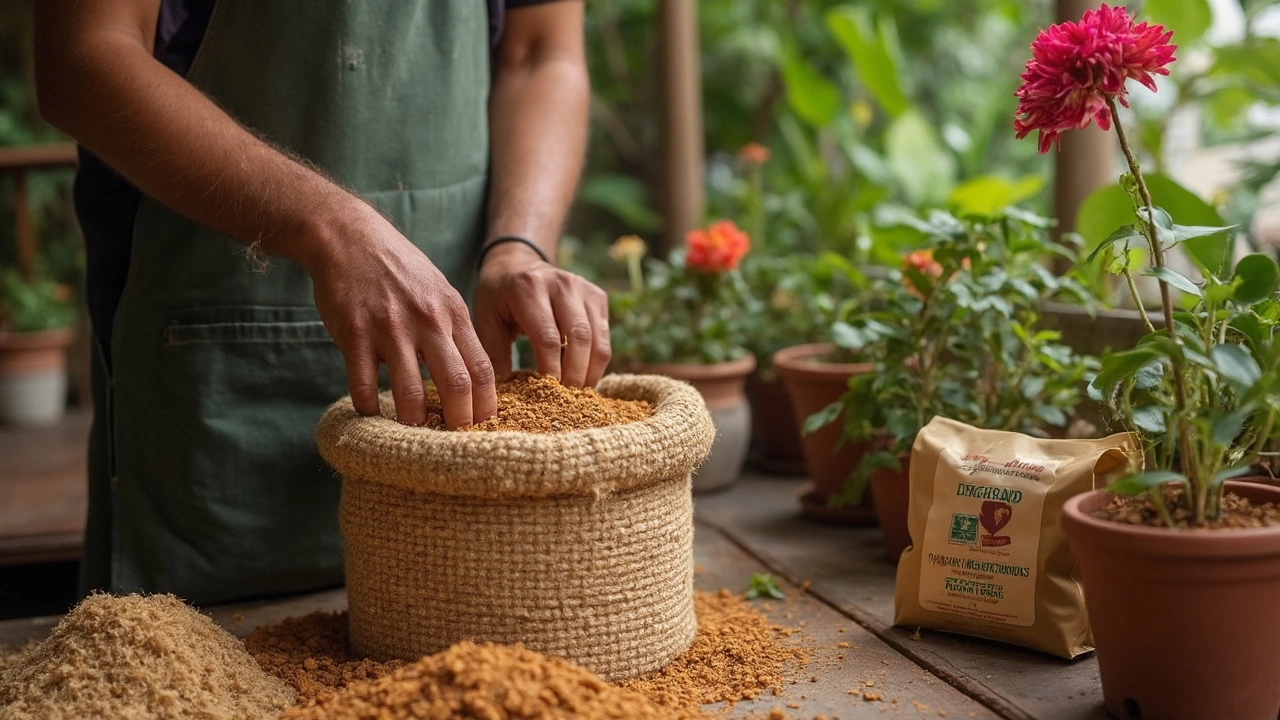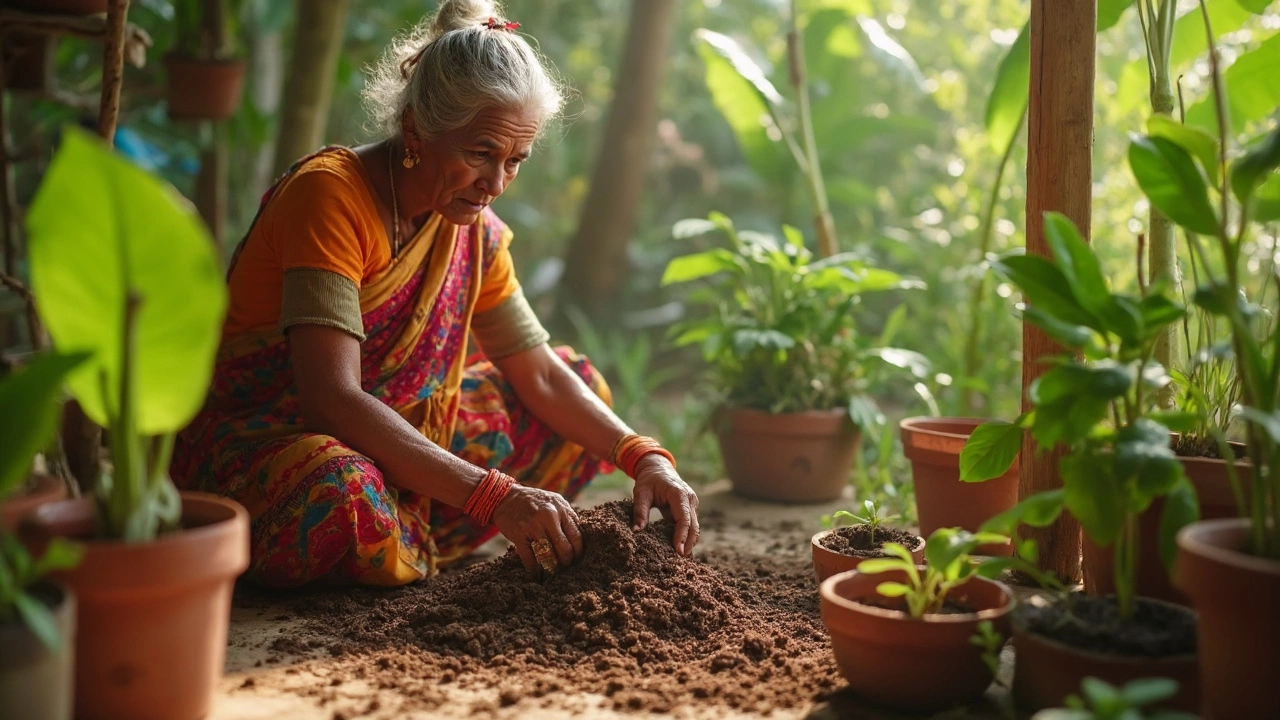Forget sticking with the same old white stuff every time you pot up your plants. The so-called miracle ingredient in most bagged soils—bright, popcorn-like perlite—has some drawbacks that have got gardeners looking for fresh options. If you’re hunting for a natural alternative to perlite, you’re in good company: more people are tuning into the environmental impact of their gardening choices and searching for better substitutes. There’s a whole world of earth-friendly materials ready to take perlite’s place, and you don’t have to be a pro to give them a try. Curious what’s out there, or how these swaps might actually make your plants happier? Buckle up, because some of these go way beyond what you’d expect from humble soil amendments.
Why Gardeners Want to Replace Perlite
Perlite might look like stryofoam, but it’s actually a volcanic glass that’s been superheated until it pops, sort of like popcorn. This gives it its signature puffed appearance and makes it incredibly lightweight. The key reason it’s everywhere in pots and soil mixes? It bumps up drainage and keeps soil from packing too tight around roots. But don’t let that list of perks distract you from some major catch points.
First, there’s the environmental side. Mining and heating perlite takes energy, and the process leaves scars on the landscape. Most of the world’s perlite is shipped thousands of miles before reaching your garden center. That gives it a surprisingly big carbon footprint for something so light. And even though it’s technically natural, it doesn’t actually add nutrients or long-term organic matter to your soil.
Then there’s the stuff nobody warns you about, like the dust clouds you get when opening a fresh bag. Not good for anyone’s lungs, especially if you have pets or allergies. Perlite also breaks down slowly but doesn’t totally disappear, which can leave your soil looking a bit odd over time.
Maybe you just plain ran out, or you’re tired of those squeaky little balls bouncing everywhere on your patio. Whatever your reason, ditching perlite doesn’t mean you need to compromise on plant health. There are plenty of cool, natural alternatives—and some of them might already be hiding in your yard or pantry.
Top Natural Alternatives: What Works Instead of Perlite?
You don’t have to roam the aisles of specialty stores to find something that works like perlite. Most substitutes come straight from nature or are simple by-products of everyday materials. Here’s a deep dive into some crowd favorites and a few unsung heroes.
- Pumice: Not too far off from perlite in both origin and look, pumice is another volcanic rock. It’s chunkier and less likely to float to the soil’s surface over time. Plus, it doesn’t break down, so it gives you reliable aeration and doesn’t compact in containers. Gardeners prize it for cactus and succulent mixes. Bonus: it’s heavier, so pots are less likely to tip.
- Rice Hulls: These are the husks left after rice is harvested and threshed. They’re totally biodegradable and naturally help with drainage and aeration. In fact, study tests have shown rice hulls can match or even outperform perlite in seed starting and container mixes. They decompose over several months to a year, slowly adding small doses of organic matter.
- Pine Bark Fines: This one’s a darling among orchid lovers, but it punches above its weight in all kinds of potted plants. Small, crumbly pieces of bark create pockets of air through the soil and gently feed beneficial soil microbes as they break down. Pine bark fines are a superstar for acid-loving plants too.
- Coconut Coir: While not a direct swap for perlite, coir’s fluffy texture can lighten soil, and when used with other amendments, helps manage moisture retention. It’s made from the outer fiber of coconuts and is renewable, unlike peat.
- Sand: Coarse builder’s sand might be old school, but it’s inexpensive and does a great job opening up dense or sticky soils. Just don’t grab sand from a playground or the beach—it has to be horticultural (washed and free of salts).
- Biochar: Charcoal made from plant matter that’s been burned without oxygen, biochar is long-lasting and builds soil health, too. It’s especially good at boosting drainage in heavy mixes and gives microbes a place to set up shop.
- Expanded Clay Pellets: Also known as LECA, these rounded clay beads are common in hydroponics, but mix a big handful into potting soil and you’ll see an airier, chunkier blend. They’re reusable and inert, meaning they won’t mess with your soil’s pH.
Still wondering if you need to go out and buy something? Even plain old leaf mold or well-chopped compost can help replace perlite’s function if you’re looking for a truly closed-loop, homemade solution. These break down plenty fast, but while they last, they give soil that springy, open texture roots crave.

How to Use Perlite Alternatives in Your Pots and Gardens
Switching to a natural substitute is less about getting the exact formula and more about reading your plants’ needs. Sure, perlite recipes are everywhere—typical mixes call for one part perlite to two parts soil—but alternatives swap in almost seamlessly once you get the hang of texture and moisture.
If you’re targeting well-drained soil for succulents and cacti, try blending in pumice, coarse sand, or clay pellets so that you can just barely form a loose ball when you squeeze the mix in your hand. This gives roots air pockets, but water still drains quickly. For seed starting, rice hulls or a mix of coir and biochar can keep things light and fluffy, stopping fragile seedlings from dampening off (aka, keeling over from too much water).
Here’s a quick setup anyone can try:
- Mix equal parts coconut coir and compost (or worm castings for a nutrient bump).
- Toss in pine bark fines if you’re dealing with orchids, monstera, or other aroids.
- Add two parts pumice (or rice hulls if you want something that eventually disappears), and you’ve got a kick-butt base that covers drainage and lightness for just about any tropical houseplant.
- If you’re in a pinch, even crunched-up, dried leaves can tease extra air into homemade potting blends, though you’ll need to top up as they break down fast.
Experiment is the name of the game. Just do a batch test with one plant before you re-pot your whole collection. Watch for too much water staying stuck (if roots start to rot, the mix may be too dense) or excessive drying out (if you water daily, dial in something that hangs on to moisture longer).
Don’t forget, local resources can make all the difference. Some regions sell rice hulls and bark fines at feed stores, while LECA and pumice often pop up at hydroponics shops. Grab bag sizes vary, so small-scale tests won’t break the bank—or your back hauling sacks bigger than your car.
Extra Tips, Hidden Benefits, and What to Avoid
Go for alternatives that tick more than one box. If you want drainage and slow-release plant nutrition, pine bark fines or composted wood chips deliver. Looking to cut waste? Rice hulls check off eco-friendly and wallet-smart in one go, as they’re usually considered a by-product headed for the landfill. If your main concern is sustainability, check the sourcing. Coconut coir rivals peat moss now for renewability, but there are still shipping footprints and water use to think about, depending on where you live.
Be careful with some swap-ins. Certain sands can add too much weight and even create a cement-like mix if overused. Not all wood chips are safe; avoid treated lumber scraps and mulches colored with dyes, as these can harm roots. And though leaf mold is fantastic, using it fresh or un-composted invites pests—give it a season or two to mellow before mixing.
As for commercial mixes labeled ‘perlite replacement’? Always peek at the fine print. Manufacturers sometimes use synthetic beads or additives to mimic perlite’s fluffiness, but they aren’t always any more natural. Trust your hands and eyes: good alternatives should look, feel, and smell like real stuff from the earth.
Finally, don’t sweat perfection. The flora growing wild outdoors never heard of perlite, and their root systems thrive in all sorts of creative, crumbly combos. Your indoor jungle or patio veggies can do just as well, and you might even cut costs or waste along the way. This hands-on approach brings another bonus: you’ll learn what your particular climate, watering patterns, and plants respond to best. Nature loves the improv.

